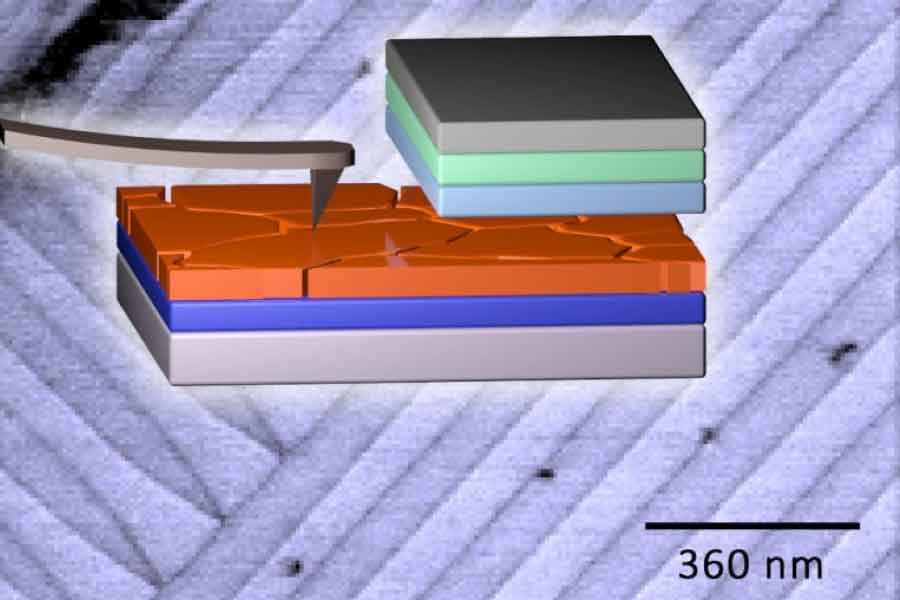On their search for underlying physical mechanisms, researchers of the Karlsruhe Institute of Technology (KIT) have now detected strips of nanostructures with alternating directions of polarization in the perovskite layers.
These structures might serve as transport paths for charge carriers. This is reported in the Energy & Environmental Science Journal.
The perovskites used by the KIT scientists are metal organic compounds with a special crystal structure and excellent photovoltaic properties. Since their discovery in 2009, perovskite solar cells have experienced a rapid development. Meanwhile, they reach power conversion efficiencies of more than 20 percent. This makes them one of the most promising photovoltaic technologies.
Research into perovskite solar cells, however, faces two special challenges: The light-absorbing layers have to be made more robust to environmental impacts and the lead contained therein has to be replaced by environmentally more compatible elements. This requires in-depth understanding of physical mechanisms that enable the high conversion rate of absorbed solar energy into electric power.

Stripes of nanostructures in perovskite solar cells can be detected by means of a type of scanning force microscopy (shown schematically).
Credit: Holger Röhm, Tobias Leonhard/KIT
An interdisciplinary team of researchers headed by Dr. Alexander Colsmann, Head of the Organic Photovoltaics Group of KIT’s Light Technology Institute (LTI) and KIT’s Material Research Center for Energy Systems (MZE) analyzed perovskite solar cells by means of piezoresponse force microscopy, a special type of scanning force microscopy, and found ferroelectric nanostructures in the light-absorbing layers. Ferroelectric crystals form domains of identical electrical polarization direction. The KIT scientists observed that, during thin-layer development, lead iodide perovskites form about 100 nm wide stripes of ferroelectric domains with alternating electric fields. This alternating electric polarization in the material might play an important role in the transport of photogenerated charges out of the solar cell and, hence, explain the special photovoltaic properties of perovskites.
“These ferroelectric structures of a few 10 nm in size might form nearly perfectly separated transport paths for charge carriers in the solar cell,” Alexander Colsmann explains. Researchers have been looking for such structures for many years in order to improve the efficiency of solar cells. “In perovskite solar cells, these structures seem to develop by themselves under certain conditions,” Professor Michael J. Hoffmann, Head of the Ceramic Materials and Technologies Division and director of KIT’s Institute for Applied Materials (IAM-KWT), says. He knows similar ferroelectric structures from ceramics research. Former theoretical studies of other researchers already predicted these advantageous nanostructures. So far, however, no evidence has been found. The scientists of KIT studied ferroelectricity of lead halogenide perovskites under the “NanoSolar” project funded by the Baden-Württemberg Foundation.
Reference(s):
1. Publication: Holger Röhm, Tobias Leonhard, Michael J. Hoffmann, Alexander Colsmann. Ferroelectric domains in methylammonium lead iodide perovskite thin-films. Energy Environ. Sci., 2017
2. Research story: Karlsruhe Institute of Technology | May 2, 2017 (source)













Comments